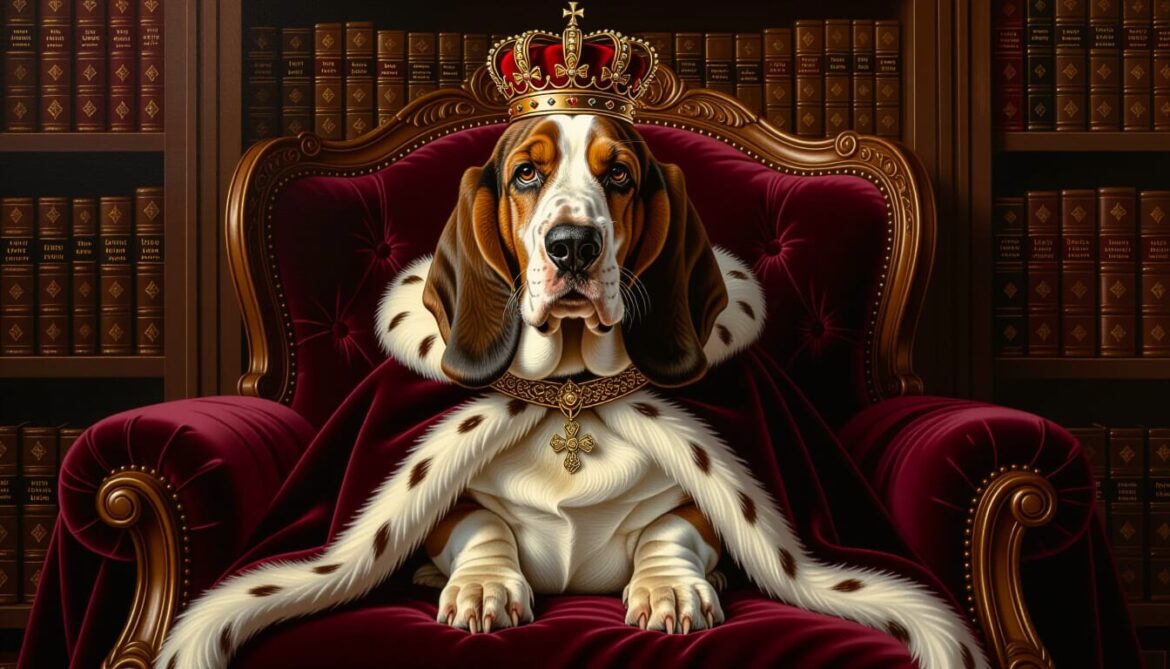The portrait hung in the west hall of the Whittemore Estate, between the cracked marble bust of Lord Alfred and a tapestry depicting a hunt that, by all accounts, had never actually occurred. Visitors often paused there—not for the marble or the tapestry—but for the dog.
A Basset Hound, cloaked in deep velvet, a small crown resting crookedly between his long, drooping ears. His name, according to the brass plaque below, was Sir Reginald of Whittemore.
To most, it was an eccentric indulgence—a noble family so lost in wealth they’d commissioned a full Renaissance-style oil painting of their pet. But to the house staff, and the few who’d lived there long enough, Sir Reginald’s story was not just legend. It was inheritance.
The last Lord Whittemore had been a recluse, a widower who’d filled his cavernous home with books, clocks, and dogs. He trusted no one, except the hound who followed him from room to room, whose steady eyes seemed to listen when the old man spoke. “You’re the only one left who understands,” he would murmur, running his hand along the velvet folds of the dog’s ear.
When he died—alone, in the library—Sir Reginald had been found beside him, silent and still, as if keeping vigil. The painter who later captured that loyalty swore the dog’s eyes had changed with the light: soft and mournful by day, yet watchful, almost sentient, by night.
Years passed. The family line dwindled. The estate changed hands more times than anyone could count. Yet no caretaker had ever been able to move the painting. Those who tried claimed it “watched” them, or that they heard claws clicking on the wood floor behind them when no dogs were present.
One night, a new curator named Evelyn stayed late, cataloging the library for a museum sale. Around midnight, the power flickered. She lit a candle—and that’s when she saw it. The air shimmered faintly in front of the portrait, like heat on a road. The crown gleamed.
She stepped closer. The painted hound’s eyes, rich and brown under the artist’s chiaroscuro brush, seemed alive in the candlelight. The crown wasn’t painted gold at all—it was brass, dulled by time, fixed to the canvas surface with the tiniest nails.
And then she realized: it wasn’t nailed to the painting. It was nailed through it.
Somewhere behind the frame, a slow, muffled sound began—a scraping, a low whine, like breath through a closed door.
The flame trembled. Evelyn took a step back.
The plaque beneath the portrait caught the light just long enough for her to read the engraving anew.
“He waits where loyalty cannot die.”

